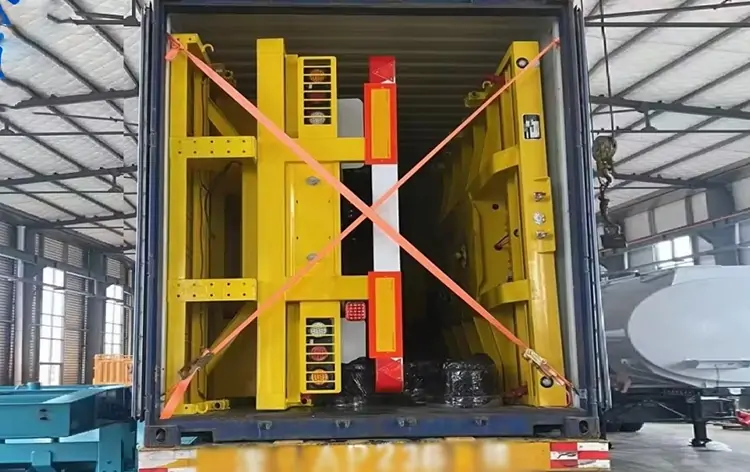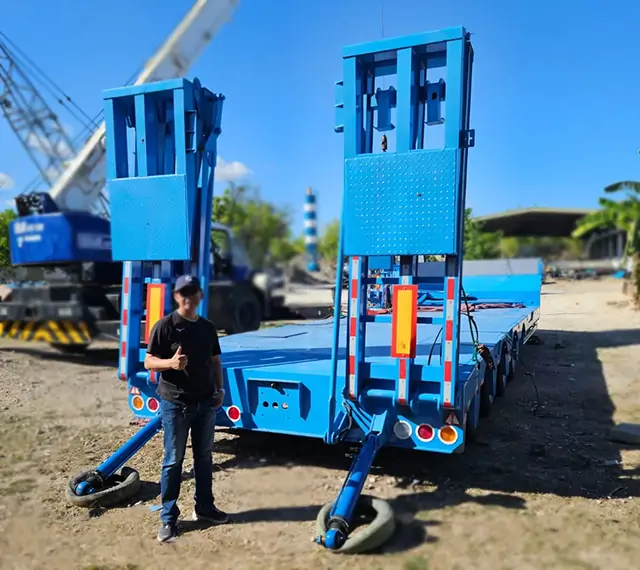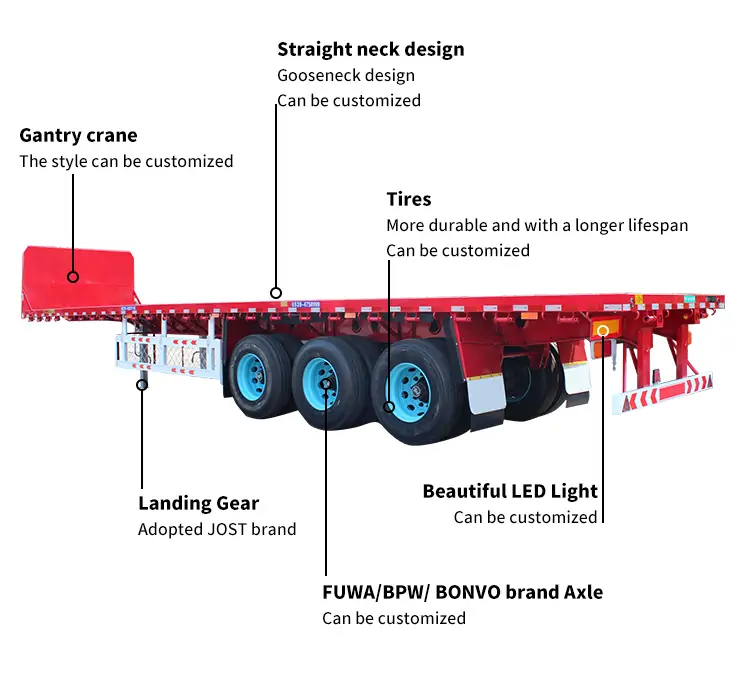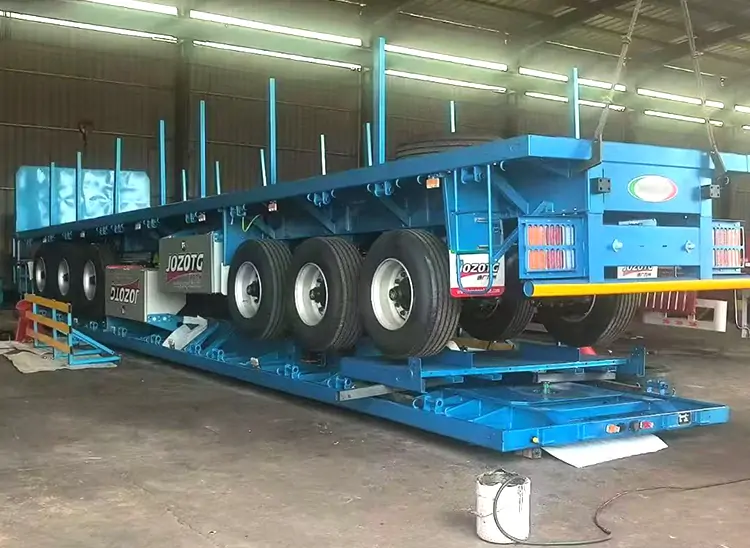The international heavy-haul sector rarely segments lowbed semi-trailers by cargo type alone; instead, axle count has become the dominant classifier because it directly governs national axle-load legislation, bridge-formula compliance and ultimately the gross permissible mass. In the African and Asian markets, where consignments often originate from mining, wind-power or oil-and-gas projects, fleet engineers must match trailer architecture to both statutory limits and road geometry. A clear understanding of the four dominant axle classes—two, three, four and five-or-more—allows specifiers to optimise payload while avoiding costly permitting delays or accelerated pavement damage penalties. The following discussion summarises structural philosophy, load spread mechanics and typical duty cycles for each category, using metric ratings that align with UNECE axle-load codes.
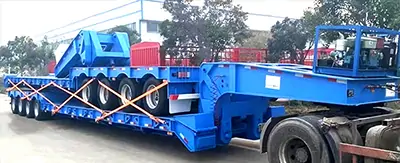
Two-axle lowbeds represent the entry point to specialised transport. The most common layout is a single-axle front bogie (1 × 9 t) combined with a tandem-axle rear bogie (2 × 11.5 t), yielding a statutory 32 t gross trailer mass in ECOWAS member states. Frame height is normally 850 mm at the gooseneck and 380 mm above ground at the loading deck, giving a bending moment envelope sufficient for 20–50 t payloads when the tractor’s fifth-wheel load is included. Main-beam section modulus ranges from 650 cm³ to 800 cm³, fabricated from 460 MPa yield steel; this keeps flange stress below 210 MPa under a 12 t point load applied through a 2.5 m × 0.3 m timber mat. Because total length seldom exceeds 13.5 m, manoeuvrability on urban job sites is high, making the configuration popular for shifting 20 t excavators or 12 m pre-cast bridge beams. Lifecycle cost is the lowest among lowbed families: tare mass is typically 8.5 t, tyre count is only 12 units, and annual maintenance reserve is budgeted at USD 0.04 per kilometre. The table below condenses key dimensional and mass parameters across the four categories.
[INSERT FIGURE 2 – Axle-Based Lowbed Classification Summary]
| Axle Layout | Statutory GVM (t) | Est. Payload (t) | Deck Length (m) | Typical Tare (t) | Main-Beam Z (cm³) | Target Cargo |
|---|---|---|---|---|---|---|
| 1 + 2 | 32 | 20 – 50 | 9.0 – 10.5 | 8.5 | 650 – 800 | 20 t excavator, precast beam |
| 2 + 1 / 1 + 2 + 1 | 39 – 42 | 50 – 80 | 10.5 – 13.0 | 11.0 | 950 – 1 100 | 35 t crusher, rail car |
| 2 + 2 | 50 – 56 | 80 – 120 | 13.0 – 16.0 | 14.5 | 1 350 – 1 550 | 65 t wind-tower section |
| 5 + 5 (modular) | 80 – 120 | 120 – 180 | 15.0 – 25.0 | 22.0 | 2 000 + (per module) | 110 t transformer, vessel head |
Three-axle units currently account for the largest volume share because they straddle the 50–80 t payload band that covers most industrial plant. Two different chassis philosophies coexist: (i) the “2 + 1” arrangement—steering front bogie plus liftable third axle—preferred in North Africa where tight urban corners require tyre scrub reduction; and (ii) the “1 + 2” fixed tri-axle, simpler and 300 kg lighter, dominant in sub-Saharan routes with gentler radii. Load distribution analysis shows that the centre axle can see 35 % of static trailer mass when the fifth-wheel offset is set at 1.6 m ahead of the king-pin; designers therefore specify 12 mm web doublers for 600 mm each side of the neutral axis. King-pin load is capped at 18 t to respect the most restrictive UNECE regulation, leaving a usable 62 t for cargo when a 6 × 4 tractor (16 t) is coupled. Deck widths are normally 3 000 mm, expandable to 3 500 mm with pinned outriggers, while hydraulic ramp angles can be lowered to 11° through 600 mm stroke cylinders—critical for loading 38 t road-headers with only 180 mm ground clearance. Annual utilisation averages 90 000 km, and fatigue testing to 2 × 10⁶ cycles at ± 0.3 g vertical acceleration indicates a 12-year structural life before major rebuild.

Four-axle and five-or-more modular lowbeds occupy the apex of the heavy-haul pyramid. By adopting twin front and twin rear bogies (2 + 2), the 80–120 t payload window is achieved without exceeding 12.5 t per axle, thereby remaining within special-permit thresholds in Kenya, Tanzania and Mozambique. The chassis becomes a welded space-frame: two 400 mm × 200 mm longitudinal box girders tied by 8 mm diaphragms every 1.2 m, creating a torsional stiffness of 8 500 N·m/°—sufficient to limit deck twist to 3 mm when one bogie rides over a 150 mm high obstacle at 30 km/h. For cargoes above 120 t, manufacturers offer multi-file modular platforms (e.g., 5 + 5 or 6 + 6), where each axle line swivels ± 20° and carries 8 t on 245/70 R 19.5 super-single tyres. The modularity allows 2-up/3-down split formations to negotiate 8 m radius roundabouts while maintaining < 1 % bending stress increase, verified by strain-gauge telemetry on a 150 t transformer move from Durban to Lilongwe. Although tare mass rises to 22 t, the cost per tonne-kilometre falls because escort vehicles and bridge plating are shared across fewer total trips. In summary, the progression from two-axle to modular multi-axle lowbeds is not merely additive capacity; it represents a calibrated engineering response to statutory, logistical and economic constraints governing out-of-gauge transport across Africa and beyond.


